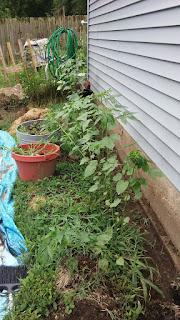On August 7th, 2024, the Hemp Feed Coalition (HFC) achieved a historic success as the full Association of American Feed Control Officials (AAFCO) membership approved the Ingredient Definition for Hempseed Meal (HSM) for Laying Hens. This federal approval represents a monumental moment for the hemp industry and a leap forward in animal nutrition. This is a critical first step in opening the door to widespread use of hemp grain in animal feed.
Hempseed Meal is not just another feed ingredient; it’s a powerhouse of nutrition. Packed with essential vitamins, minerals, and a complete protein profile—including all 20 amino acids and the nine essential ones—HSM offers unparalleled benefits for laying hens. Research has shown that incorporating HSM into a hen’s diet significantly improves egg quality. Hens fed with hempseed meal lay eggs enriched with essential fatty acids like ALA, DHA, and GLA, which are vital for promoting human health.
The approval process was no small feat. It involved years of rigorous evaluations, detailed correspondence with the FDA-Center for Veterinary Medicine (FDA-CVM), and careful consideration by the AAFCO Ingredient Definition Committee. This victory is thanks to the relentless efforts of the Hemp Feed Coalition and its partners. Their commitment to recognizing the value of hemp as a feed ingredient has been instrumental in achieving this success.
For farmers, the approval of Hempseed Meal provides a new avenue for crop rotation and farm flexibility, offering a nutritious and sustainable alternative to traditional feed sources like soy and canola. The nutritional benefits extend beyond the farm, as consumers will soon have access to eggs that are not only delicious but also nutritionally superior.

From left to right: HFC Executive Director, Morgan Tweet; HFC President, Andrew Bish; AAFCO Ingredient Definition Committee Chair Erin; HFC Board Member Bill Bookout
This milestone is just the beginning. The Hemp Feed Coalition remains dedicated to expanding the authorization of hemp seed products across a wider range of animals. As we look to the future, advocating for FDA and state-level approvals for hemp-based feed ingredients for pets and other non-production animals will be crucial in promoting agricultural diversity and sustainability.
The approval of Hempseed Meal for Laying Hens is more than just a win for the hemp industry—it’s a step towards a more resilient, diverse, and environmentally conscious agricultural future. Let’s keep the momentum going and continue to champion the integration of hemp into all aspects of animal nutrition.

























